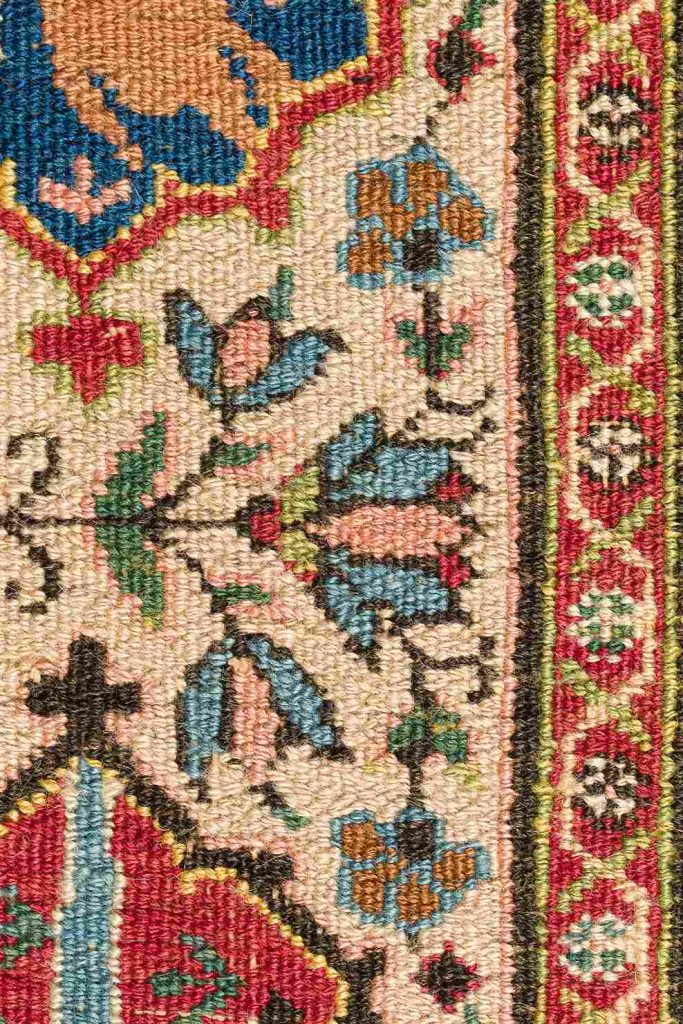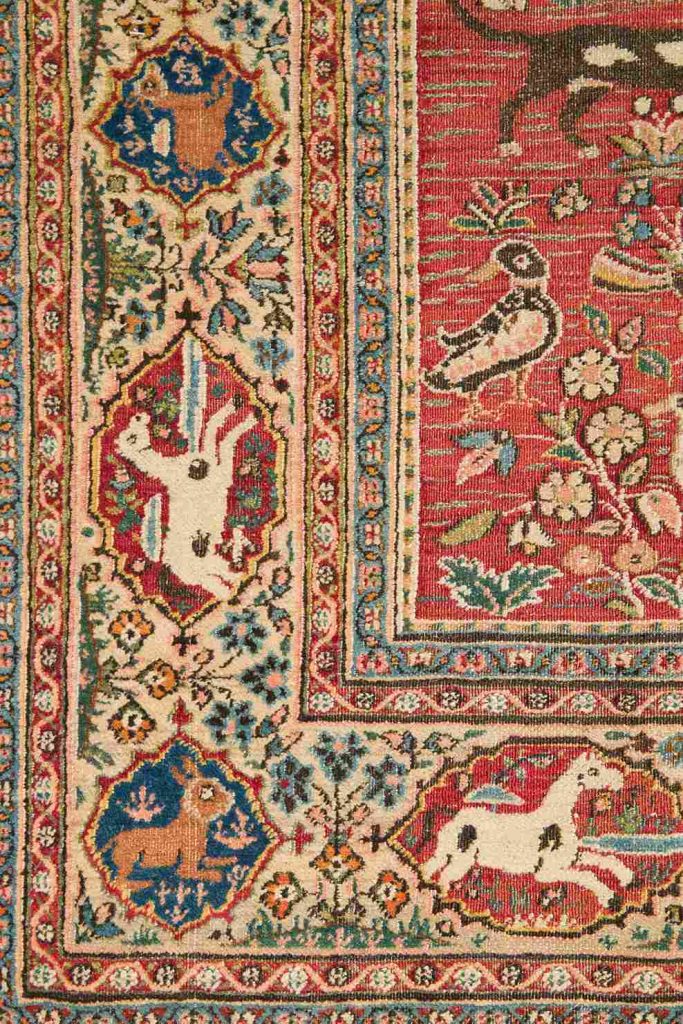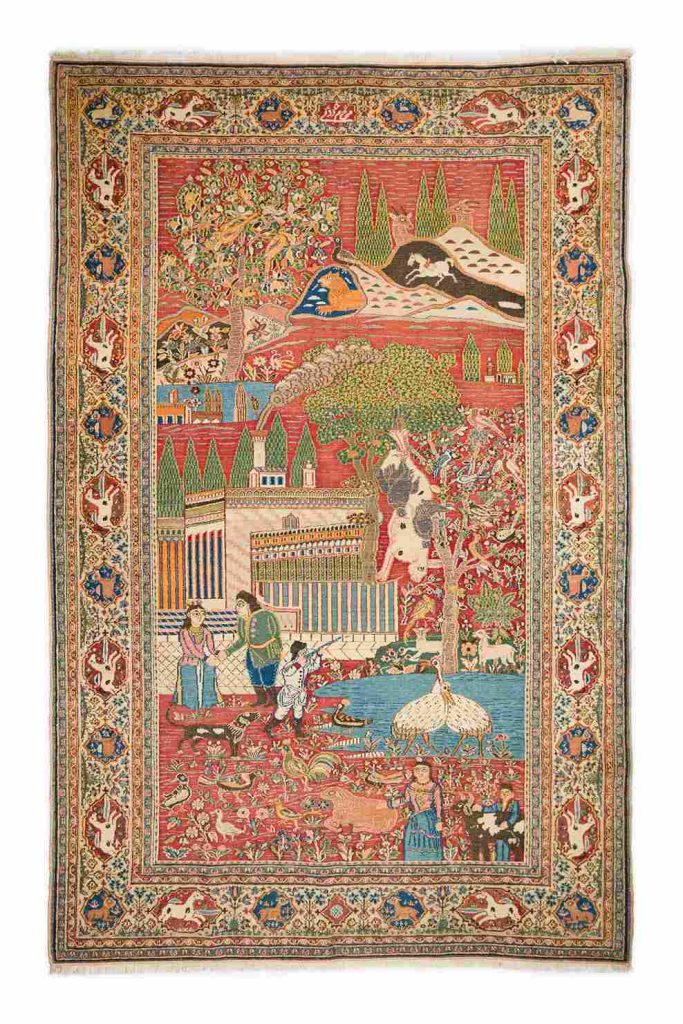Carpet No: 16088
Origin: East Persia
Size: 200 x 128 cm
from sh.sameyeh Oriental carpet catalogue page No.31
Age: 2nd quarter of 19th century (1880)
Knots: 7 x 7 =49 knots per sqcm
Condition: . Excellent .
Sign . Master weaver Khodrouee
Collectable: item .
Category: East Faris
Description of Design and History:
Persian Dorokhsh Rugs / From khorasan state c, a town of the Qainat region . East west Persia – Antique Persian rugs range tremendously in style and design, a result of the long and important rug-making tradition that has been part of Persian society for centuries. Almost every region of Persia (which is coterminous with modern day Iran) has its own particular style and method for weaving fine rugs and carpets, and it can be amazing to behold this tremendous range. Among the traditional styles of Persian rugs, one of the most interesting is the Doroukhsh , which is itself a Knorassan style.
Antique Dorokhsh rugs and carpets produced in Doroukhsh in the traditional style are notable for several reasons, and are relatively easily identified based on several different characteristics. They also tend to feature a large, elaborate central medallion – a characteristic that is not unique to knorasan tugs, but that is nevertheless important. Further, Doroknsh rugs tend to possess a certain softness. especially compared to other Khorassan rugs – the quality of the wool used by the rug-makers of Persian Dorokhsh Rugs From khorasan state colose to Meshad city – Antique Persian rugs range tremendously in style and design, a result of the long and important rug-making tradition that has been part of Persian society for centuries. Almost every region of Persia (which is coterminous with modern day Iran) has its own particular style and method for weaving fine rugs and carpets, and it can be amazing to behold this ttemendous range. Among the traditional styles of Persian rugs, one of the most interesting is the Dorokhsh . which is itself a Khorassan style. Hunting has been one of the oldest traditions of Iran.
All natural dyes are paramount for the carpet to have more than just decorative value. Beyond that, various dyers had varying levels of skill and invested different lengths of time in dyeing the yarns. The “quality of color’-its radiance and level of nuance within each color-is centrally important. Certain rare colors such as Tynan purple, saffron yellow, cochineal rose and greens add to the carpet’s value



